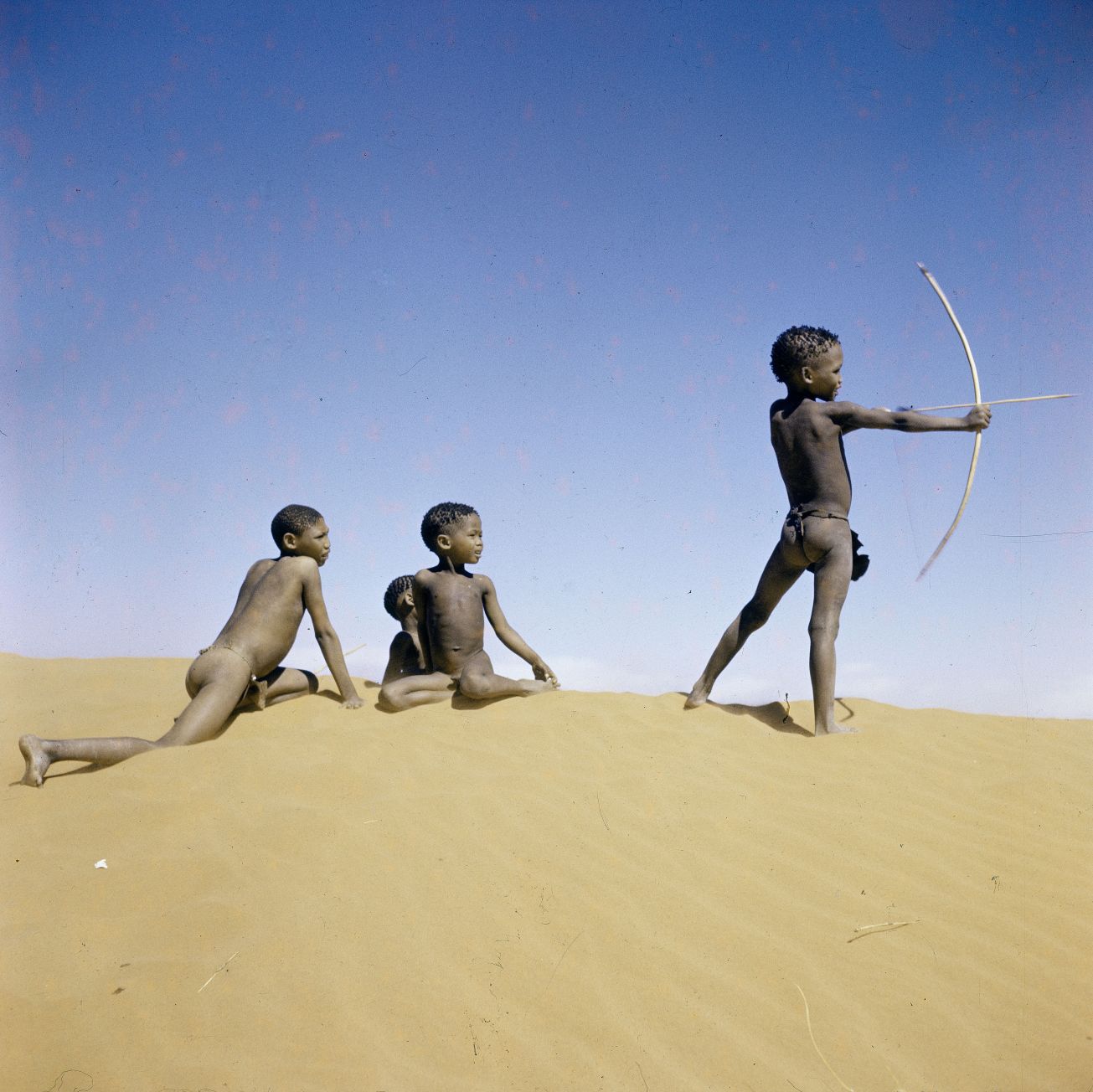A very blue sky. Children having fun in sand dunes. Target practicing. Passing time. The photo was taken by a Danish explorer in the Kalahari Desert in the southern parts of Africa in 1947. Even now, the Kalahari Desert is in many ways on the brim of the world; back then, it was pretty much unknown territory. But soon to be documented through photography…
In January 1947 the young journalist, Jens Bjerre headed out into the unknown. A few weeks earlier, the 26-year-old Dane had quit his rather good position at the newspaper Politiken to follow his dream of exploring some of the far-away corners of the world. Bjerre headed to the southern parts of Africa to visit what was then known as a ‘primitive tribe’ in the Kalahari Desert covering a vast area in the southern part of Africa.
In the then capital of Southwest Africa, Windhoek, Bjerre applied for permission to visit the San people in the Kalahari Desert, but was denied access to the ‘wild and uncivilised’ people, who were living with a minimum of contact with the outside world. By chance, however, he was invited by two Christian missionaries, who were authorised to enter the territory of the San people. And with him, he brought his Rolleiflex photo camera and a video-camera.
Bjerre spent about a month among the San-bushmen, who lived entirely as their ancestors had done for millennia. Their material culture was extremely sparse; they wore no clothes, slept behind provisional windbreaks, and were able to survive in the extremely harsh and unwelcoming natural environment. Bjerre documented his visit among the San people through film, photography, and later also text.
After returning to Windhoek, he handed his film in to be developed before returning to Denmark. The owner of the photo developing company found great interest in the photos, and he suggested that Bjerre contact one of his friends, who was a member of the Royal Geographical Society in London. Subsequently, Bjerre was invited to London to give a presentation on his visit and to show some of his many photographs. That visit opened some important doors for Bjerre. He became a member of the Royal Geographical Society, and his career as explorer, writer, photographer, and filmmaker was kick-started.
In the 1950s, Bjerre took a tour around Danish village halls, where he gave talks on his many tours around the worlds, screened his films, and showed his photographs. Later on, he was invited to lecture in universities in the US and Europe. Today, Moesgaard Museum has a set of Bjerre’s photographs as well as some of the artefacts, he has collected over the years.
Since 1947, the world seems to have shrunken. Modernity has invaded even the remotest areas of the planet – often leaving the indigenous peoples, such as the San people in the Kalahari, in a difficult situation. Whether the San children are still passing their days in the sand dunes practicing to be great game hunters, is not likely…
//Ulrik Høj Johnsen

